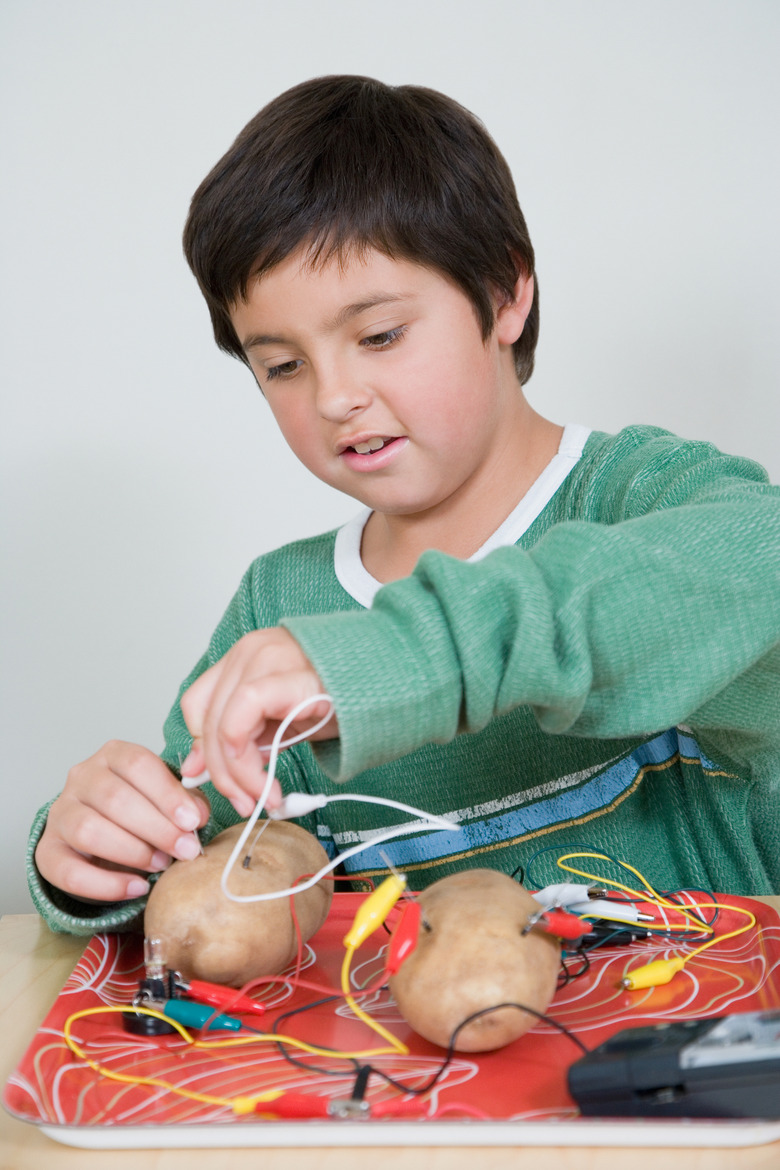Difference Between Manipulative & Responding Variable
In any scientific experiment, the scientist controls for the variables within the experiment. If more than one variable influences the experiment, the outcome becomes difficult to determine. For example, if one set of plants grows inside and another set of plants grows outside, many variables (including light, temperature and humidity) impact plant growth. Without controlling for these variables, the results cannot be compared. Scientists therefore control for all except one variable in experiments.
Experimental Control
Experimental Control
The control in an experiment is the version of the experiment that can be used for comparison. In many cases, the control is the unmanipulated version of the experiment, or the "normal" condition of the subject of the experiment. If experimenting to determine the effect of salt on freezing point of water, the control version of the experiment would be freezing water without any salt. If experimenting to determine if plants grow faster in red light, the control version would be plants grown in full-spectrum light.
Controlled Variables
Controlled Variables
Unfortunately, experimental terminology can get a little confusing. The control in an experiment isn't the same as the controlled variables. The controlled variable definition science uses essentially states that controlled variables include all the variables the experimenter controls or keeps constant to prevent interference with the experimental results.
For example, in the water-and-salt freezing experiment controlling the variables would mean using the same type of water for all experiments, using the same amount of water, the same size and shape of container to freeze the water, the same freezer, and the same measurement tool and technique. Every factor of the control (plain water) and the experiment (water with salt) would be exactly the same except the salt.
Manipulated Variable
Manipulated Variable
The manipulated variable in an experiment is the one variable of the experiment that the scientist decides will change. The manipulated variable may also be called the independent variable. In a properly designed experiment, there will be only one manipulated variable. In the salt and water experiment, for example, the manipulated variable is the amount of salt added to the water. In the plant experiment, the manipulated variable is the light. Every other aspect of the experiment should be exactly the same between experimental groups and between test or trial runs.
Responding Variable
Responding Variable
One responding variable definition says the responding variable is what will be measured in the experiment. The responding variable, also called the dependent variable, is what the scientist measures as the experiment progresses. The responding variable is the response of the experimental subject to the manipulated variable. The dependent variable depends on what happens during the experiment. The two terms, responding variable and dependent variable, describe the same aspect of the experiment.
Although the experiment should only have one manipulated variable, there may be more than one responding variable. For example, the addition of salt to water may change the freezing temperature or the freezing time or both, or neither. The effect of changing the light wavelength on plant growth might be plant height, chlorophyll production, new leaf production or a combination of these factors. The scientist may define what outcome will be observed, but a good scientist should also collect observations of other outcomes as well. For example, if the scientist sets out to test the effect of light color on plant growth, a lack of growth or negative result in the experimental group would be recorded, but if the experimental group also has reduced leaf growth (all compared to the control group, of course), the researcher should also record this data.
Responding variables need to be measured using objective criteria. Results must be taken without bias or speculation by the scientist. Saying that the plants in full-spectrum light "look healthier" than plants grown in red light doesn't provide a measurable or objective outcome. Without objective and measurable outcomes, the experiment's results can't be authenticated.
Reporting Experimental Results
Reporting Experimental Results
Scientists report experimental results in written format, data tables and graphs. The standard format for graphing experimental results shows the manipulated variable on the x-axis of the graph and the responding variable on the y-axis of the graph. In the salt and water experiment, the amount of salt (manipulated variable) would be shown on the x-axis, and the freezing temperature (responding variable) would be shown on the y-axis. A graph showing plant height under different light conditions would show the light color or wavelength (the manipulated variable) on the x-axis and the plant height (responding variable) on the y-axis.
References
- University of Central Arkansas: Developing Research Questions: Hypotheses and Variables
- University of California at Berkeley: Frequently Asked Questions About How Science Works
- Penn State University: Define the Variables
- University of Connecticut: Variables
- Indiana University Bloomington: Controlled Variables
- Macquarie University: The Graph
Cite This Article
MLA
Blaettler, Karen G. "Difference Between Manipulative & Responding Variable" sciencing.com, https://www.sciencing.com/info-8774671-difference-between-manipulative-responding-variable/. 26 October 2018.
APA
Blaettler, Karen G. (2018, October 26). Difference Between Manipulative & Responding Variable. sciencing.com. Retrieved from https://www.sciencing.com/info-8774671-difference-between-manipulative-responding-variable/
Chicago
Blaettler, Karen G. Difference Between Manipulative & Responding Variable last modified March 24, 2022. https://www.sciencing.com/info-8774671-difference-between-manipulative-responding-variable/
